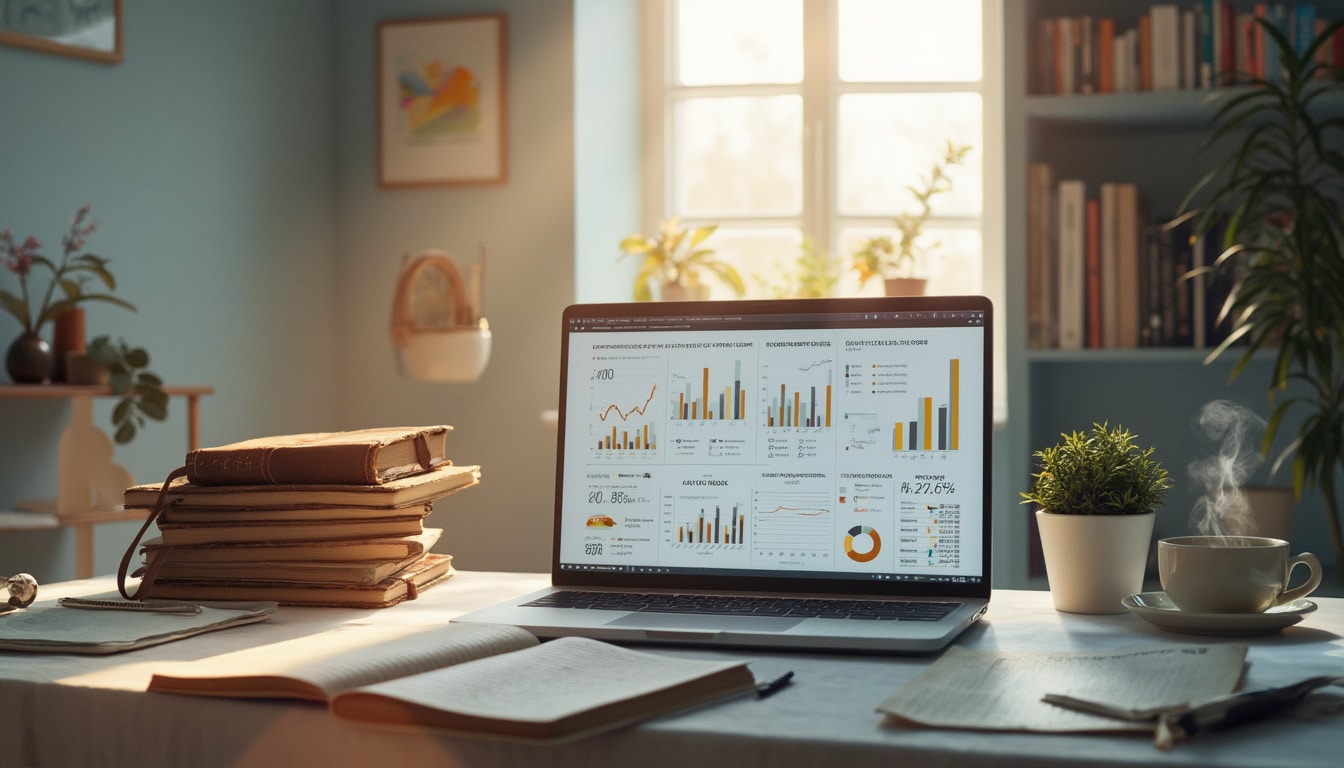Se lancer dans l’auto-entrepreneuriat est une aventure passionnante qui attire de plus en plus de personnes en quête d’indépendance et d’innovation. La micro-entreprise offre une multitude d’opportunités pour réaliser des projets divers et variés. Dans ce guide, nous allons explorer en profondeur les étapes et les conseils pour devenir auto-entrepreneur en France. Que vous souhaitiez développer une activité en ligne, ouvrir un service à la personne, ou lancer un produit innovant, ce guide vous fournira des clés essentielles pour naviguer dans le monde de l’auto-entrepreneuriat.
Nous aborderons les formalités administratives, les avantages et inconvénients, les possibilités d’accompagnement, et bien plus encore. Restez avec nous pendant que nous plongeons dans cet univers fascinant qui allie passion et indépendance professionnelle.
Comprendre les fondamentaux de la micro-entreprise
Avant de vous lancer, il est important de bien comprendre ce qu’est une micro-entreprise. Le statut d’auto-entrepreneur, qui a été créé pour simplifier la création d’entreprise, propose des démarches allégées et une fiscalité simplifiée. Mais ce n’est pas tout : il permet également de tester une idée sans prendre trop de risques financiers. Même si le statut présente de nombreux avantages, il est important de ne pas négliger les inconvénients potentiels.
Les avantages du statut d’auto-entrepreneur
Le statut d’auto-entrepreneur présente plusieurs avantages indéniables :
- Simplicité des démarches : L’inscription en ligne sur le site de l’Urssaf est rapide et gratuite. Il suffit de remplir un formulaire et de fournir quelques pièces justificatives.
- Fiscalité allégée : Vous paierez des impôts uniquement sur le chiffre d’affaires et non sur les bénéfices, ce qui peut être très avantageux pour les petites activités.
- Protection sociale : En tant qu’auto-entrepreneur, vous êtes inscrit au régime de la sécurité sociale des indépendants, ce qui vous permet de bénéficier d’une couverture en cas de maladie ou de maternité.
- Flexibilité : Vous êtes libre de gérer votre emploi du temps et de travailler selon vos propres conditions.
Ces avantages font du statut d’auto-entrepreneur une option très attractive pour ceux qui souhaitent se lancer dans l’entrepreneuriat.
Les inconvénients à considérer
Malgré ses nombreux atouts, le statut de micro-entrepreneur a également ses inconvénients, qu’il est essentiel de prendre en compte avant de faire le grand saut :
- Plafonds de chiffre d’affaires : Vous devez rester sous des plafonds de chiffre d’affaires pour bénéficier du statut de micro-entrepreneur. Si vous les dépassez, il sera nécessaire de changer de statut.
- Responsabilité personnelle : En tant qu’auto-entrepreneur, vous êtes personnellement responsable des dettes de votre entreprise. Cela signifie que vos biens personnels peuvent être en jeu en cas de problèmes financiers.
- Difficulté à trouver des financements : Les auto-entrepreneurs peuvent rencontrer des difficultés lorsqu’il s’agit d’obtenir des prêts bancaires.
En pesant ces avantages et inconvénients, vous serez mieux préparé à faire un choix éclairé et à comprendre ce qui vous attend en tant qu’auto-entrepreneur.
Si vous êtes convaincu que le statut d’auto-entrepreneur est fait pour vous, passons maintenant aux démarches nécessaires pour franchir le cap. Les étapes suivantes vous permettront de mettre toutes les chances de votre côté et de démarrer votre activité dans les meilleures conditions.
Les étapes pour devenir auto-entrepreneur
Création d’une micro-entreprise peut sembler complexe, mais en réalité, les étapes sont bien définies et assez simples à suivre. Voici comment procéder :
1. Étudiez votre idée et le marché
Avant de vous lancer, prenez le temps de vérifier que votre idée répond à un besoin. Réalisez une étude de marché ; cela vous aidera à comprendre qui sont vos clients potentiels et comment vous démarquer de la concurrence. Utilisez des outils en ligne pour analyser les tendances actuelles et évaluer la rentabilité de votre idée. Des plateformes comme Shopify peuvent offrir des insights précieux sur les idées de business prometteuses à lancer.
2. Choisissez un nom d’entreprise
Le nom de votre micro-entreprise est essentiel pour votre identité de marque. Optez pour un nom qui soit à la fois original et évocateur de ce que vous proposez. Pensez également à vérifier la disponibilité du nom sur les réseaux sociaux et en tant que domaine web.
3. Procédez aux formalités d’inscription
Une fois que vous avez analysé votre idée et choisi un nom, il est temps de passer à l’inscription. Pour cela, rendez-vous sur le site de l’Urssaf, remplissez le formulaire en ligne et soumettez les documents demandés. Il est crucial de fournir des informations précises pour éviter les retards dans le traitement de votre dossier.
4. Obtenez les assurances nécessaires
Une fois inscrit, n’oubliez pas de souscrire aux assurances en fonction de votre activité. Cela peut inclure une assurance responsabilité civile professionnelle, ce qui est indispensable pour protéger aussi bien votre entreprise que vos clients.
5. Comptez sur les aides disponibles
N’hésitez pas à explorer les aides proposées pour les auto-entrepreneurs, notamment des formations via des plateformes de coaching ou des subventions pour le démarrage de votre activité. Ces ressources peuvent vous aider à gagner en compétitivité.

Expériences personnelles
L’expérience de certains entrepreneurs peut également servir de guide. Prenez par exemple Marc, qui a décidé de devenir auto-entrepreneur dans le domaine du digital. Au départ, il se sentait perdu, mais après avoir suivi plusieurs webinars et lu des livres sur le sujet, il a pris confiance et a ainsi développé une clientèle fidèle en quelques mois seulement. Écoutez les retours d’expérience de ceux qui l’ont précédé, cela peut s’avérer très inspirant.
Les obligations fiscales et sociales
Une fois votre auto-entreprise créée, il est crucial de connaître vos obligations fiscales et sociales. La gestion de ces aspects peut sembler intimidante, mais une fois que vous aurez compris le fonctionnement, vous vous sentirez plus à l’aise avec vos responsabilités.
1. Déclarations de chiffre d’affaires
Vous devez déclarer votre chiffre d’affaires chaque mois ou chaque trimestre, en fonction de votre choix lors de l’inscription. Ces déclarations sont simples à réaliser sur le site de l’Urssaf. Assurez-vous de bien le faire pour éviter des pénalités.
2. Paiement des cotisations sociales
Les cotisations sociales sont calculées en fonction de votre chiffre d’affaires. Si vous ne réalisez pas de chiffre d’affaires, vous n’aurez pas de cotisations à payer, ce qui est un soulagement pour les entrepreneurs en démarrage.
3. Respect des obligations comptables
Bien que la comptabilité soit simplifiée pour les auto-entrepreneurs, elle demeure obligatoire. Il est recommandé d’utiliser des logiciels de comptabilité en ligne pour faciliter cette tâche. Des exemples de logiciels incluent ceux disponibles sur Otomatic.
4. Les impôts sur le revenu
En tant qu’auto-entrepreneur, votre revenu sera soumis à l’impôt, cependant, vous avez la possibilité d’opter pour le prélèvement libératoire de l’impôt sur le revenu si vos revenus ne dépassent pas certains seuils.
Comprendre ces obligations peut vous faire gagner énormément de temps et vous aider à éviter les mauvaises surprises. Une bonne gestion fiscale peut faire la différence pour la pérennité de votre entreprise.
Stratégies de développement et de réussite
Une fois que vous êtes bien installé dans votre activité, il est temps de penser à sa croissance. Juste après la création, vous pouvez vous concentrer sur le développement de votre clientèle et la fidélisation de vos clients.
1. Construire votre image de marque
Votre image de marque est un élément clé de votre réussite. Investissez du temps pour créer une identité visuelle qui attire votre public cible. Cela inclut un logo professionnel et un site web accueillant.
2. Utiliser les réseaux sociaux
Les réseaux sociaux sont des outils puissants pour promouvoir votre activité. Créez des comptes sur des plateformes comme Instagram, Facebook ou LinkedIn pour interagir avec votre audience. N’hésitez pas à partager du contenu pertinent et engageant qui met en avant votre expertise. Vous pouvez trouver des astuces pour cela sur Les Numériques.
3. Le réseautage
Participez à des événements ou des rencontres professionnelles pour élargir votre réseau. Les relations que vous établirez pourront vous ouvrir des portes vers de nouvelles opportunités.
4. Offrir un service client exceptionnel
Gardez toujours à l’esprit que le service client est primordial. Faites en sorte que vos clients se sentent écoutés et valorisés. Le bouche-à-oreille est un outil puissant pour attirer de nouveaux clients.
5. Se former en continu
Le monde des affaires évolue constamment. Pour rester à jour, formez-vous régulièrement sur les dernières tendances de votre secteur. Cela vous permettra de vous adapter aux changements et de continuer à croître.
6. Analyser vos performances
Utilisez des outils d’analyse pour évaluer votre progression et votre performance. Cela vous permettra de faire les ajustements nécessaires pour optimiser votre activité. Pensez à intégrer des logiciels de gestion qui vous aident à suivre vos KPI.
Ces stratégies cumulées contribueront non seulement à votre confort au travail, mais aussi à la pérennité de votre entreprise. Ne négligez pas ces aspects si importants pour vous épanouir en tant qu’auto-entrepreneur.
Les tendances de l’auto-entrepreneuriat en 2024
Se projeter dans l’avenir est essentiel. Devenir auto-entrepreneur en 2024 va impliquer de s’adapter aux nouvelles tendances et défis. Examinons les évolutions prévues dans ce domaine.
1. Digitalisation accrue
Les entreprises qui se digitalisent rapidement sont celles qui prospèrent. Le télétravail et l’utilisation des outils numériques continuent d’être une nécessité. Les auto-entrepreneurs doivent adapter leurs services pour répondre à cette demande croissante de solutions en ligne.
2. Sensibilisation à l’écologie
Les clients sont de plus en plus soucieux de l’environnement et préfèrent travailler avec des entreprises responsables. Si votre activité intègre des principes écologiques, n’hésitez pas à les mettre en avant dans votre communication.
3. La montée du freelancing
Avec l’essor de l’économie collaboratif, le freelancing est en plein essor. Les auto-entrepreneurs doivent s’entrer dans une démarche collaborative et travailler en synergie avec d’autres professionnels.
4. L’importance du bien-être au travail
Le bien-être sera au cœur des préoccupations. Offrir des services qui prennent en compte la santé mentale et physique peut être un atout pour attirer les clients.
Rester attentif à ces tendances vous aidera à positionner votre activité d’auto-entrepreneur dans la bonne direction. Ne vous laissez pas dépasser par l’évolution de votre secteur ; au contraire, anticipez et innovez pour vous distinguer.
Les ressources utiles pour l’auto-entrepreneur
Pour vous accompagner tout au long de votre cheminement en tant qu’auto-entrepreneur, voici quelques ressources incontournables :
1. Sites de référence
- Urssaf – Le site officiel pour toutes les démarches administratives liées à l’auto-entrepreneuriat.
- Service Public – Informations sur le statut d’auto-entrepreneur, les droits et les obligations.
- Guide pratique du micro-entrepreneur – Un manuel essentiel pour naviguer dans le monde de l’auto-entrepreneuriat.
2. Outils pratiques
Utilisez des outils de gestion pour faciliter votre quotidien : logiciels de comptabilité, gestion de projet, ou encore outils de marketing digital. Choisissez ceux adaptés à votre fonctionnement.
3. Groupes et forums de soutien
Rejoindre des groupes sur les réseaux sociaux ou des forums peut s’avérer bénéfique. Partagez vos expériences, posez vos questions, et écoutez les conseils d’autres auto-entrepreneurs.
En utilisant ces ressources, vous augmenterez vos chances de succès et vous pourrez trouver de l’inspiration auprès d’autres professionnels partageant vos ambitions.
Devenir auto-entrepreneur est un voyage passionnant qui requiert du sérieux et de la détermination. En vous armant des bonnes connaissances et en vous entourant des bonnes ressources, vous pourrez non seulement établir une activité prospère, mais également profiter de la liberté et de la flexibilité qu’offre ce statut.










Leave a Reply